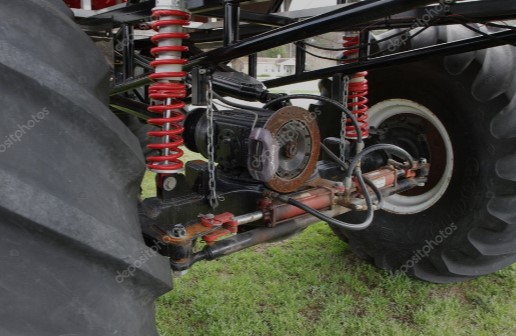Introduction
Riding in a truck can be a bumpy and uncomfortable experience, especially on long journeys. But with the right truck suspension system, you can enjoy a smoother ride while also improving your vehicle’s performance. In this guide, we will discuss everything you need to know about truck suspension and how to master it for optimal comfort and performance.
What is Truck Suspension?
Truck suspension refers to the system of springs, shock absorbers, and linkages that work together to support your vehicle’s weight and absorb impact from uneven road surfaces. It is responsible for maintaining proper tire contact with the road, providing stability and control, and minimizing vibrations and bumps.
Types of Truck Suspension
There are three main types of truck suspension: leaf spring, coil spring, and air suspension.
- Leaf Spring: This is the most traditional type of truck suspension, which uses stacked metal strips (leaves) to support the weight of the vehicle. It is known for its durability and ability to handle heavy loads.
- Coil Spring: This type of suspension uses coil-shaped springs to absorb shocks and provide a smoother ride. It is commonly found in passenger cars and some light trucks.
- Air Suspension: This type of suspension uses air bags instead of traditional springs, allowing for adjustable ride height and a more comfortable ride. It is often used in heavy-duty trucks and luxury vehicles.
Signs of Worn-Out Truck Suspension
Just like any other vehicle component, truck suspension will eventually wear out and need to be replaced. Here are some signs that your truck suspension may need attention:
- Excessive bouncing or swaying while driving
- Uneven tire wear
- Difficulty steering or handling the vehicle
- Clunking or banging noises when going over bumps
If you notice any of these signs, it’s important to have your suspension inspected by a professional.
How to Master Truck Suspension for Optimal Comfort and Performance
Now that you understand the basics of truck suspension, here are some tips to help you master it for a smoother and more efficient ride:
1. Check Your Tire Pressure Regularly
Proper tire pressure is crucial for the performance of your truck suspension. Make sure to check your tire pressure at least once a month, and before long trips.
2. Upgrade Your Shocks and Springs
If you’re looking to improve your truck’s performance and ride quality, consider upgrading your shocks and springs. Look for high-quality aftermarket options that are specifically designed for your make and model of truck.
3. Adjust Your Suspension for Different Loads
If you regularly carry heavy loads in your truck bed, make sure to adjust your suspension accordingly. This will help prevent sagging and maintain proper ride height.
4. Use Add-Ons for Extra Support
There are various add-ons that can provide extra support and stability to your truck suspension, such as sway bars or air helper springs. These can be especially helpful if you frequently tow trailers or carry heavy loads.
5. Regular Maintenance
As mentioned earlier, truck suspension will eventually wear out over time. To prolong its lifespan and ensure optimal performance, make sure to follow the manufacturer’s recommended maintenance schedule.
6. Balance Your Vehicle’s Load
An unbalanced load can significantly affect your truck’s suspension and overall handling. Distribute the weight evenly in your truck bed to maintain balance and avoid putting unnecessary stress on one side of the vehicle. This can help prevent issues like uneven tire wear and suspension damage.
7. Consider Professional Alignment
Regular alignment checks can ensure that your truck’s suspension geometry is optimized for performance and comfort. Misalignment can lead to issues like uneven tire wear and poor handling, so it’s important to get your truck professionally aligned at regular intervals or if you notice any handling issues.
8. Inspect Suspension Components Regularly
Periodic inspection of your suspension components can help identify wear and tear before it leads to bigger problems. Check for signs of damage or wear such as cracked or broken springs, leaking shocks, and worn bushings. Regular inspections can help you address minor issues before they escalate into more costly repairs.
Conclusion
Mastering truck suspension is essential for a comfortable and safe driving experience. Regular maintenance, proper load distribution, and occasional upgrades can go a long way in ensuring optimal performance and longevity of your truck’s suspension system. With the tips mentioned in this guide, you can enjoy smooth rides on any road ahead. So keep these tips in mind and hit the road with confidence! So keep these tips in mind and hit the road with confidence! Remember, a well-maintained suspension not only provides a comfortable ride but also improves your truck’s overall performance.
